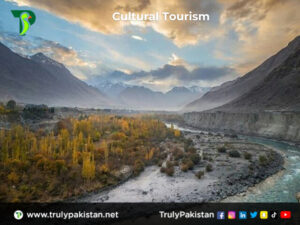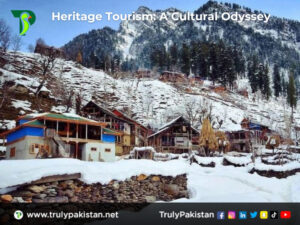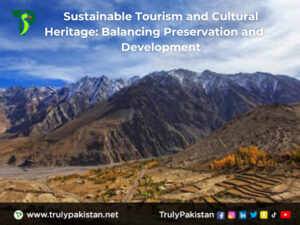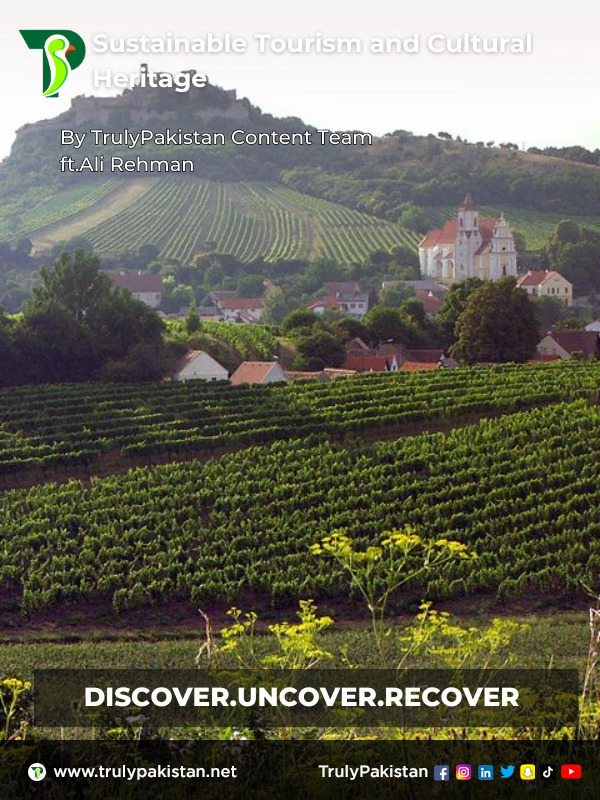Cultural Heritage and Sustainable Tourism
Cultural heritage, often regarded as the cornerstone of a community’s identity, lays the foundation upon which sustainable tourism thrives. In the exploration of distant lands and cultures, it becomes paramount for travelers to grasp the profound significance of respecting local customs, traditions, and beliefs. This endeavor transcends the realm of enriching the tourist experience; it serves as an enduring commitment to the preservation of cultural heritage.. Sustainable tourism encourages these interactions between tourists and locals, fostering mutual appreciation.

Sustainable Development and Cultural Tourism
In the context of sustainable tourism, sustainable development emerges as a pivotal component, transcending the mere pursuit of economic benefits. It signifies a profound commitment to prioritizing the welfare of local communities and the protection of cultural heritage. A judicious evaluation of the intricate interplay of economic, social, and environmental impacts becomes essential, enabling the delicate equilibrium between development and preservation to be meticulously upheld.
Heritage Tourism: A Cultural Odyssey

Heritage tourism is an essential component of sustainable tourism. It spotlights historical sites, museums, and traditional practices, driving visitors toward authentic cultural experiences. By implementing visitor limits and employing conservation techniques, we protect these invaluable treasures, ensuring they remain unscathed by excessive tourist traffic.
Sustainable Business Models in Tourism
Sustainable tourism calls for a recalibration of the business models that drive the industry. It encourages eco-friendly accommodations, responsible waste management, and endeavors to reduce the carbon footprint of tourism activities. A sustainable business model in tourism prioritizes not only profit but also the conservation of cultural heritage and environmental preservation.

Conservation and Management
Conservation lies at the heart of preserving cultural heritage. Historical sites, artifacts, and traditions are often vulnerable to the impacts of tourism. Through meticulous management and maintenance, we ensure these cultural gems remain untouched and untarnished. It involves the use of environmentally friendly construction materials and careful planning to mitigate adverse effects.
Cultural Tourism: Bridging Past and Present
Cultural tourism offers a bridge between the past and the present, allowing tourists to participate in local cultural events and festivals. It is through these events that communities showcase their unique culture and heritage, while simultaneously benefiting from the economic influx generated by tourism.
Authentic Interpretation for a Deeper Connection
Authentic interpretation is another vital component of sustainable tourism. The act of enlightening tourists about the profound cultural significance of the destinations they explore not only nurtures a heightened appreciation but also fosters a profound respect for the local culture and heritage. This reservoir of knowledge not only enriches the travel experience but also stands as a bedrock upon which responsible and respectful tourism is built.
To sum up, sustainable tourism represents an unparalleled opportunity to meticulously balance the scales between economic advancement and the protection of cultural heritage.. By thoughtfully integrating cultural heritage, sustainable development, heritage tourism, the sustainable business model in tourism, cultural tourism, conservation, management, and authentic interpretation, we can optimize our approach to travel. This comprehensive strategy not only enhances the experiences of travelers but also serves as a formidable guardian of the cultural heritage of the places visited, securing their vibrancy for future generations. As you set out on your next journey, keep in mind that your conscientious decisions as a responsible tourist wield substantial influence, making a noteworthy contribution to both the preservation of cultural heritage and the sustainable evolution of the destination you choose to explore.

